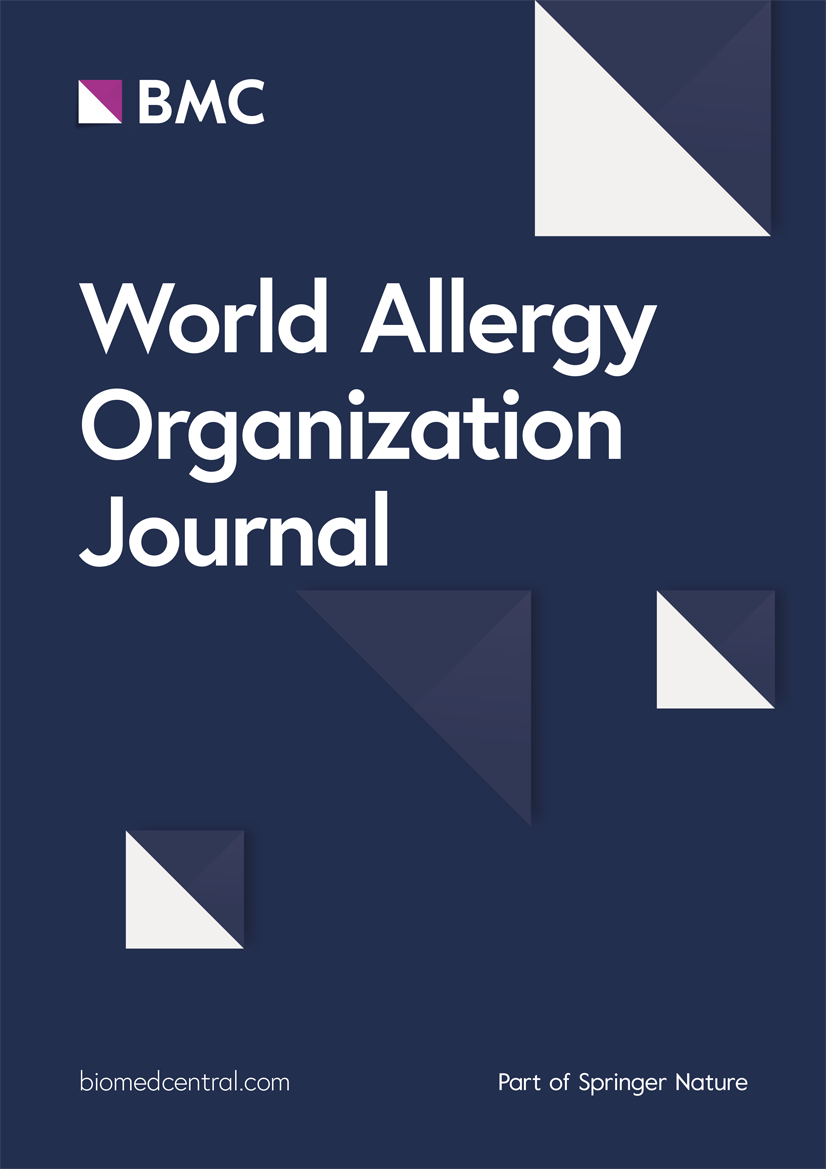Ambrosia (ragweed) pollen — A growing aeroallergen of concern in South Africa
IF 3.9
2区 医学
Q2 ALLERGY
引用次数: 0
Abstract
Background
Ragweed is an invasive, highly allergenic weed predicted to expand its habitat with warming global temperatures. Several Ambrosia species have been identified in South Africa for well over a century; however, its presence remained undetected by allergists and aerobiologists until the development of an extensive aerospora monitoring system across South African urban areas since 2019. This paper presents the inventory of preliminary investigation of the Ambrosia airborne pollen and the taxonomic identification of ragweed species.
Methods
Burkard volumetric spore traps for collecting pollen samples are set up in 9 South African cities (Johannesburg, Cape Town, Pretoria, Kimberley, Durban, Potchefstroom, Ermelo, Bloemfontein, and Gqeberha). Light microscopic identification was combined with environmental DNA metabarcoding analysis to confirm the species level of airborne Ambrosia at selected monitoring stations. Ragweed sensitisation was examined in Cape Town between February 2019 and February 2024, using Allergy Xplorer (ALEX2) multicomponent allergen array.
Results
Ambrosia pollen was detected in 5 aerobiological monitoring stations over the sampling period (Durban, Kimberley, Pretoria, Potchefstroom, Johannesburg). Periods of 4 consistent pollination years were observed in Kimberley (min: 1; max: 16 p.g/m3) and Durban (min: 26; max: 66 p.g/m3). In Pretoria, ragweed pollen was detected for 2 years (2020–2021; 2022–2023) with average total annuals (5-17 p.g/m3). A peak flowering period between March and April was observed in Potchefstroom, and several ragweed pollen peaks were present between the end of December and the beginning of May in Durban. The highest number of Ambrosia pollen grains was recorded in Potchefstroom, with 308 grains, and a maximum peak of 47 p.g/m3. eDNA metabarcoding confirmed the presence of Ambrosia artemisiifolia and A.trifida species. The overall prevalence of Ambrosia-sensitisation amongst 673 tests (age range 7–72 years) was 8.2% (55/673), with no significant difference in sensitisation patterns between age groups.
Conclusion
Our study confirms the need to monitor the spread of ragweed, and an increasing awareness of Ambrosia as an allergen of concern in Southern Africa. Extension of aerobiological networks and testing for Ambrosia sensitisation across urban and rural sites will be required.
豚草花粉——在南非引起关注的一种日益增长的空气过敏原
豚草是一种具有高度过敏性的入侵杂草,预计随着全球变暖,其栖息地将扩大。一个多世纪以来,南非已经发现了几种安氏菌;然而,自2019年以来,在南非城市地区建立了广泛的空气孢子虫监测系统之前,过敏症专家和空气生物学家一直没有发现它的存在。本文介绍了豚草空气花粉的初步调查和豚草种类的分类鉴定。方法在南非9个城市(约翰内斯堡、开普敦、比勒陀利亚、金伯利、德班、Potchefstroom、Ermelo、Bloemfontein和Gqeberha)设置burkard体积孢子诱捕器采集花粉样本。采用光镜鉴定与环境DNA元条形码分析相结合的方法,确定了选定监测站空气中安氏菌的种类水平。2019年2月至2024年2月,在开普敦使用Allergy Xplorer (ALEX2)多组分过敏原阵列检测豚草致敏性。结果5个监测站(德班、金伯利、比勒陀利亚、波切夫斯特鲁姆、约翰内斯堡)在采样期内检测到sambrosia花粉。在金伯利观察到4个一致的授粉年(min: 1;最大:16磅/立方米)和德班(最小:26;最大:66磅/立方米)。在比勒陀利亚,检测到豚草花粉的时间为2年(2020-2021;(2022-2023),年平均总量为5-17 p.g/m3。Potchefstroom的花粉高峰期为3 ~ 4月,德班的花粉高峰期为12月底~ 5月初。在Potchefstroom中,Ambrosia花粉粒数最多,为308粒,最高峰值为47 p.g/m3。eDNA元条形码证实了蒿属和三叶草属的存在。在673例试验(年龄范围7-72岁)中,ambrosia致敏的总体患病率为8.2%(55/673),年龄组之间的致敏模式无显著差异。结论我们的研究证实有必要监测豚草的传播,并且越来越多的人意识到豚草是一种令人担忧的过敏原。将需要在城市和农村地区扩展空气生物学网络和测试安氏菌的致敏性。
本文章由计算机程序翻译,如有差异,请以英文原文为准。
求助全文
约1分钟内获得全文
求助全文
来源期刊

World Allergy Organization Journal
Immunology and Microbiology-Immunology
CiteScore
9.10
自引率
5.90%
发文量
91
审稿时长
9 weeks
期刊介绍:
The official pubication of the World Allergy Organization, the World Allergy Organization Journal (WAOjournal) publishes original mechanistic, translational, and clinical research on the topics of allergy, asthma, anaphylaxis, and clincial immunology, as well as reviews, guidelines, and position papers that contribute to the improvement of patient care. WAOjournal publishes research on the growth of allergy prevalence within the scope of single countries, country comparisons, and practical global issues and regulations, or threats to the allergy specialty. The Journal invites the submissions of all authors interested in publishing on current global problems in allergy, asthma, anaphylaxis, and immunology. Of particular interest are the immunological consequences of climate change and the subsequent systematic transformations in food habits and their consequences for the allergy/immunology discipline.
 求助内容:
求助内容: 应助结果提醒方式:
应助结果提醒方式:


